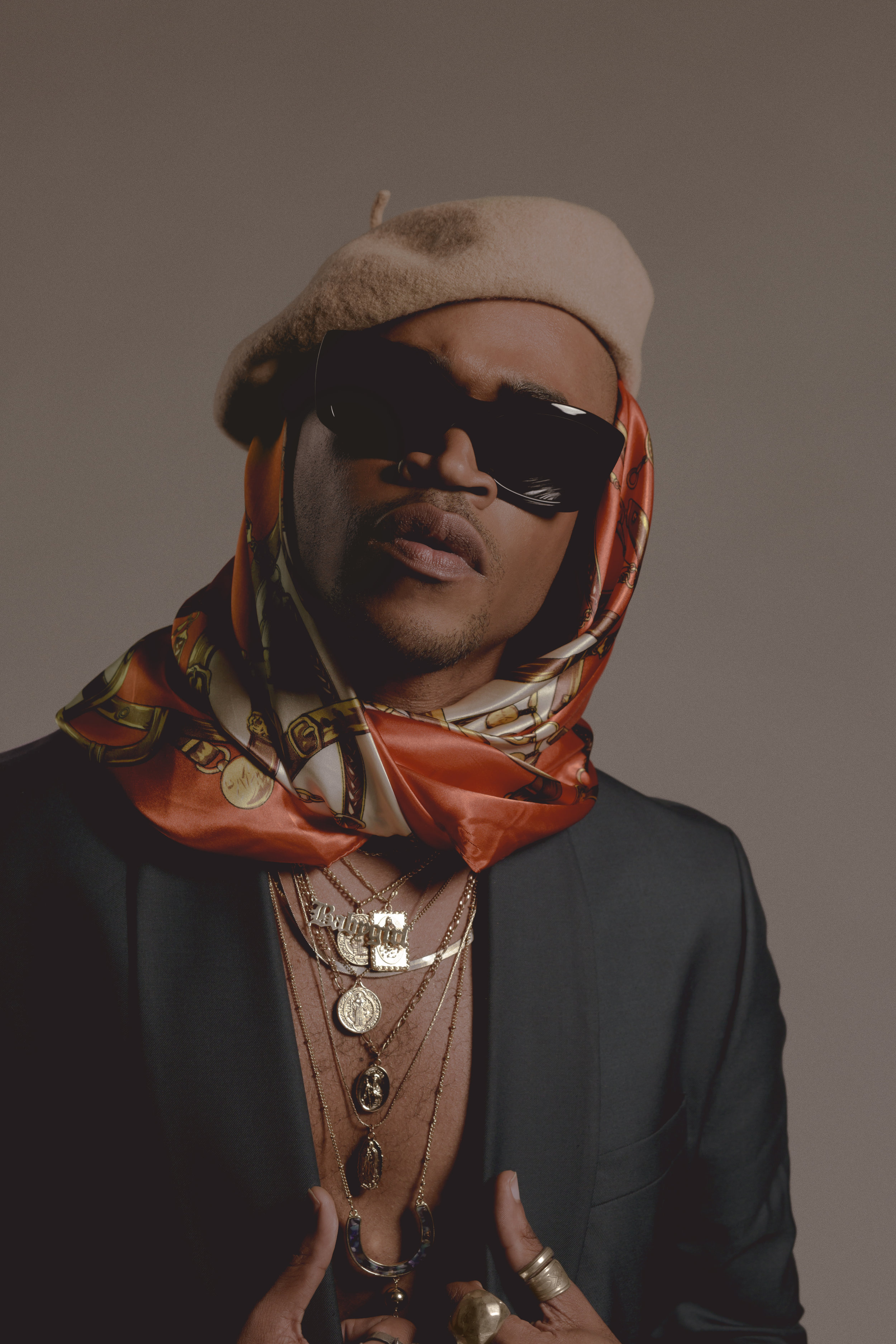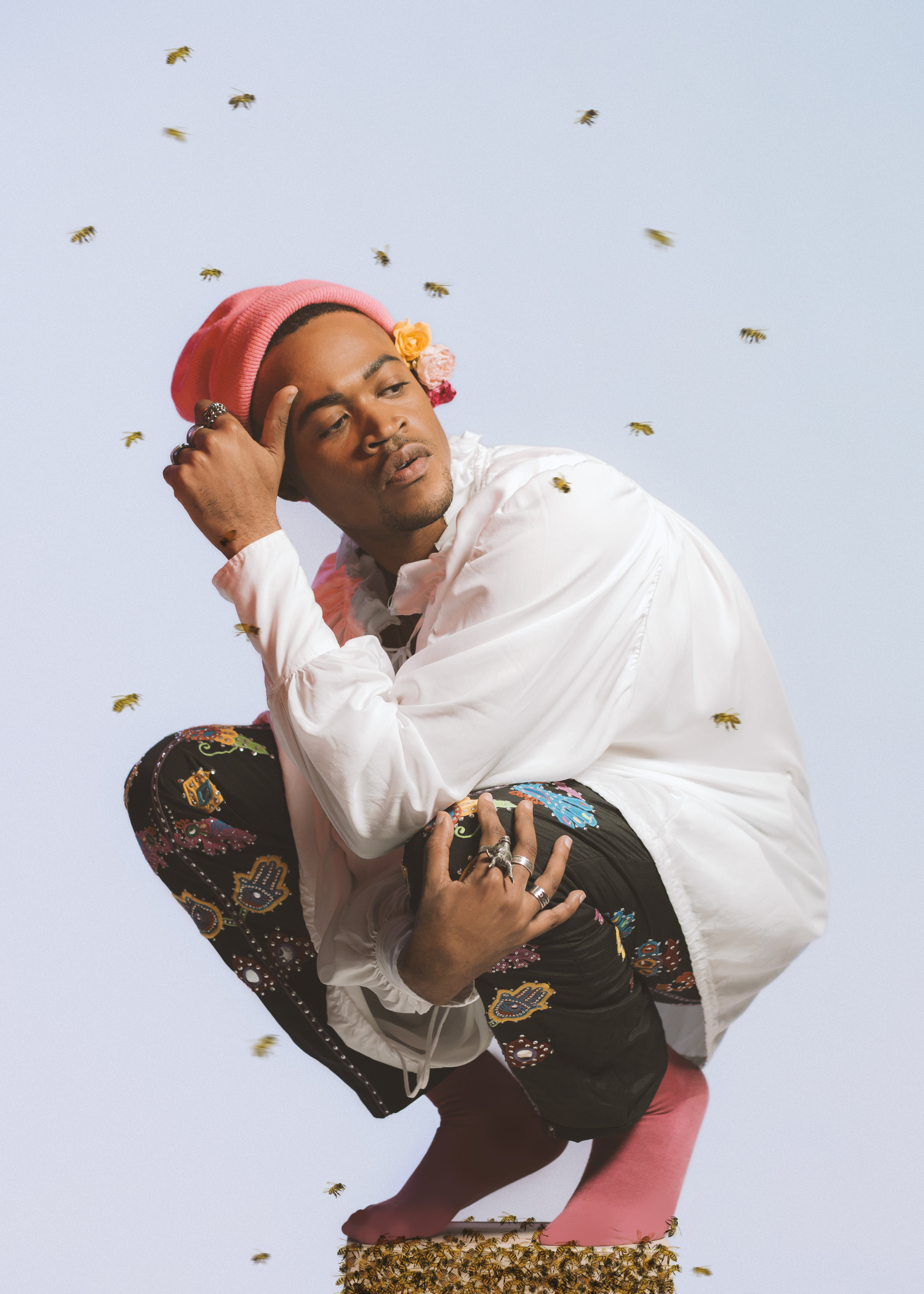Q&A | Vincent Martell
by Morgan Vickery
A young man stood in the blank white space of a photoshoot backdrop. Sheltering his body was the cream and gold kimono with bright floral accents. He curved his spine, bowing inward on himself. Across his shoulders, a gold embroidered crane spread its wings in flight. The man pressed his hands to his chest an gave his chin to his shoulder. There was no apology in his eyes as he looked into the camera.
That young man was Vincent Martell, founder of VAM production studios. Martell started the Chicago-based company in 2016. Since then, VAM has produced both original and branded content along with music videos which have featured artists such as Jamila Woods and Chance the Rapper. VAM has also done work showcasing Chicago’s LGBTQ nightlife scene which included RuPaul's Drag Race alum, Shea Coulee, in her music video “Crème Brûlée.”
Flaunt sat down with Martell to discuss his upcoming digital series, Damaged Goods, his roots as an artist, and his experience as a filmmaker in Chicago. Martell told the story of how Damaged Goods came to be and shared his unapologetic attitude of creating an authentic representation of marginalized communities.
Tell us about your upcoming digital series, Damaged Goods?
It’s really exciting because it’s cultivating all of my past experiences as a young artist of color trying to navigate Chicago and the hustle that is Chicago. This was written by myself, Zak Payne and KB Woodson: all three very gay men of color. I am excited for people to see with that lens.
Damaged Goods is about four roommates struggling to make ends meet and figure out who they are. They’re four incredibly messy characters, incredibly flawed in their early 20’s. They’re trying to figure out what their purpose is. You see these beautiful and nuanced moments of them in the workplace. What does that look if you’re an artist of color in a white-dominated space? You see that in the nightlife and the queer scene, which were so incredibly influential to my experiences as an artist. Then, you see what sex looks like and how intimate but also how insanely complicated that can be for young people trying to figure out their identity in the process.
There are a lot of huge tropes that I think happen throughout the series, but I think the biggest one is how these people come together as a chosen family and how they lean on one another. There are a lot of these intimate moments with them smoking a joint, them going out together, and protecting themselves. It’s a lovely, warm story but also super exciting. It’s very colorful and rooted in the Chicago DIY scene, so there’s a lot of grunge and grit attached to it as well.
What is the significance of the title?
One thing that I wanted to do when creating Damaged Goods was to make sure that we have a representation of nuanced characters. I wanted them to be messy. We really don’t get see characters of color being messy on screen. Usually, there’s this plastic representation that Hollywood puts on from a white perspective. Now, you have these creators who are tired of seeing that.
The title, “Damaged Goods,” comes from the fact that these characters are messy. We don’t really get that in the media: us being messy, flawed, all over the place, and a little fucked up. I think that there is beauty in that. Although the title might seem a bit controversial, I think that there is a subtle beauty that exists with just being messy and a bit damaged.
What do you want people to know about LGBTQ, queer, and POC cultures in Chicago?
I want people to just see how beautiful it is. There is an energy in those specific communities that are hard to explain if you are not a part of them. I think what we did really shows how vibrant those communities are and to do that we included over 30 different artists help us direct the art and provide pieces of art. We had queer, women, femme, and trans artists.
Same with the music. All of the music is from Chicago artists: indie artists, women, femme, and queer artists. Our music consultant is Ariel Zetina who is one of the most amazing House DJ’s in the country right now.
You have that beautiful thread throughout the series. It’s in the art direction, the music, the wardrobe. It’s 100% provided by Chicago artists. They’re all these different identities, and we wanted to make sure that their voice was present because we wanted to execute Damaged Goods in a way that felt authentic to who we are. It’s the only way we know how to do it. What you see in front of the lens is exactly what is happening behind the lens. We get to say that.
Are there elements of your own identity and story in the series?
A lot of what is in the series is inspired by things that the other writers and I have faced. I try not to create art that I don’t connect to. Everything stemming from ‘Damaged Goods’ are things that I have known and have lived through, for the most part. So ‘Damaged Goods’ feels very familiar. That’s the only way that I like to create art. It has to connect to me, and I have to be able to relate to it, or else I can’t do it. The series is hugely inspired by not only my experiences growing up in the Chicago artist community but also my friends’ stories. It feels incredibly authentic to who we are.
How would you describe your filmmaking style?
One thing that I am really proud of is that we always try to be as inclusive as possible. I think that also leads to our sets being ‘teaching sets.’ We come onto set knowing that it is okay to experiment, to play, and to ask questions. I think that it’s rare to get that opportunity to play, specifically as a gay filmmaker of color. We wanted to make sure that everyone that came on set felt as though they could experiment, play, and with the boundaries a bit. I’m not into ‘safe work.’ I feel that as an artist, especially now, you have to speak to the times.
In order to do that for us, we needed to go outside of the box. That started with creating a safe-set, which is still something that is still not happening in Hollywood. We are starting our opening meetings with, “What’s your pronoun?” Those little things just make the set a much safer place for people who might feel marginalized.
I’m always trying to go there. In the series, there is a lot of drug use, a lot of sex, a lot of transactions in queer nightlife spaces. We’re seeing it from a very unapologetic angle. I finally feel as though my work is unapologetic. It’s a very freeing feeling. I think that’s the foundation of our sets: unapologetic. Whoever you are, as long as you are creating something that is pushing the narrative and defying societal norms, it’s okay to experiment with that. That’s the foundation of VAM as well. That’s been our mission since we launched.
Are there filmmakers who might have helped to cultivate this unapologetic identity that you’re showcasing in your work?
To start locally, there’s Sam Bailey. She is the artistic director of VAM, and my best friend. My first experience on a production set was with Sam Bailey while she worked on her series, Brown Girls. Seeing a black woman run a set with women and queers was life-changing for me. Especially having to deal with years and years of being the only one on set, and feeling intimidated, disrespected, and stepped over. Sam Bailey’s set totally changed my entire perspective of what film can be. We took that experience from Brown Girls and made that a template of all of our productions.
On a wider scope, there is Gaspar Noé. His film, Enter the Void, is a big inspiration of mine — also, Larry Clark’s Kids. And as crazy as that is, I do think that there is a grittiness that I love. There are also a lot of different foreign films that I gravitate towards, a lot more than American cinema to be honest. My favorite one is Un Chant D’Amor by Jean Genet. It’s an experimental film following the lives of incarcerated gay men in the early 1950’s France. It’s a beautiful film and the experimentation there was something that I could feel connected to.
I first got introduced to film while I was studying abroad at the University of Barcelona. It was incredibly special. I got welcomed into this underground DIY scene and the film community. That set in motion this idea of, “Maybe my work can be a bit surreal.” I wanted it to encompass some whimsy and romanticism. Being seen as an artist first, an American second and a black man third in a different country was freeing for me. Barcelona was the start of me as an artist which is why I think why I am so inspired by so many artists and filmmakers outside of the USA.
What was the process of starting your own production company like for you?
After I came back from Barcelona, I worked for years to save up money to invest in my own company. It was tough because I didn’t have the film connections. I didn’t have a mentor, and I don’t come from money. I was doing something that was terrifying for a lot of people that I know. I made it my mission to create a team that could give something unique to the world, a unique perspective and something different. That group just happened to be the people around me: my friends and my community. And those people happened to be people of color, women, and femme, and trans people. I spent the next four years after I came back from Barcelona grouping together this team of superheroes who had some crazy shit to say and who were unapologetic in the way that they said it.
It was a lonely experience though because you feel like you’re the only one out here. I asked questions a lot of the time, and when I did, it was met with skepticism and people thinking that I couldn’t do it or that I couldn’t take it to the next level. Fast forward a couple of years, now we have teams in Chicago, New York, LA, Atlanta, and now we have a couple of directions in London. All with the central mission of making our own narratives from our own perspectives and being able to explore what that looks like. There’s power in that, and I’m starting to see it more and more. It makes up for that moment of loneliness and isolation that I felt.
What are some lessons that you’ve learned along the way that you’d like to impart on other young creatives?
Start with your community, whatever that might be. I think about when I first started as a filmmaker, all my work was centered around people in my community. Drag queens, performance artists, burlesque dancers. From there, it started to grow, but we didn’t have to reach outside our community to create work. All of the buzz came from the work that we were doing in our own city. Start small and start with the people that you know.
Don’t be afraid to reach out and ask for help. That is something that I am stubborn about. That has taken me years and years, and I am still learning to be open to reaching out. I think that is something that a lot of creatives don’t really take advantage of. I felt lonely in the past, and I think we’ve all felt that way, especially now. I think anytime you can reach out to those people around you and to experiment and play; you should do it.
I will always say Prioritize artists from marginalized communities if you can. I think that perspective is so fascinating, and I don’t think we have time for boring shit, to be honest. Anytime you can make your team diverse; it adds longevity to whatever you’re doing. There are so many perspectives that can speak to so many different audiences. That’s been the beautiful thing about VAM. Our team has always been made up of that diverse pool of artists. We’ve been able to speak to so many different types of people. Even though a gay, black man heads VAM, we speak to so many kinds of people. There is strength in that.
In the current political climate, how does your work contribute to the conversations we have about marginalized cultures?
I think about me as a black man in America. I think about the type of media that I’ve had shoved down my throat for as long as I’ve lived. One thing that I have always hope to see is some glimmer of representation of who I was. Still to this day, maybe until Damaged Goods, I have never felt that connection and representation. I think that it's vital for those
marginalized communities to feel empowered by content that they can relate to. The more we do that now, the more feasible it will be for the next generation to come along and do it. What we can do is create content for those communities and be unapologetic and authentic about it. That’s the only way we can benefit from that work, by seeing authentic representations of ourselves.
Are there any celebrities that are on your wish-list to collaborate with?
What’s really cool is that now I am getting opportunities to work with people I have always wanted to. One artist is Jungle Pussy who is an indie rapper from New York who I have loved for years. We just wrapped up production with her. I would love to work with a Chicago rapper called Noname. Then there’s Saba whose another indie rapper. Kim Chi is another amazing talented drag queen and artist I would love to work with. There is a Spanish artist named Rosalía, also Troy Sivan. There’s so many more.
I think my perspective could be beneficial to the fashion community right now. I think we see a lot of controversy due to the fact that those fashion houses aren’t diverse. Especially when it comes to marketing and video content, I think giving that responsibility to a more diverse and younger group of artists could be a huge benefit.
VAM does a lot of musical projects alongside original content. From a creator’s standpoint: how is storytelling through a music video different (or similar) from that of original narratives?
Across all content that we create, I have to make sure that those people who come in understand our integrity, our team, and our mission. I’ve turned down a lot of projects due to people not knowing exactly who we are. I do that to make sure that we aren’t tokenized. It’s so easy for a huge company to come in and tokenize us in a way that is soul-sucking. So, I always make sure to vet whoever comes to our community to protect my team and the content we create. It’s not as easy because we aren’t rich. But I think at the end there is something about keeping your integrity as an artist and having that thread through your career that is really important. We’re now seeing people come in who know us, and they love us for who we are, which is so empowering. It’s happening in a very organic way, and I am excited to see where that leads.
Damaged Goods is scheduled to premiere on March 26th, 2019.
Talent: Vincent Martell
Produced by: Morgan Vickery
Written by: Bethany Tomasian
Photography by: Steven Piper
Film by: Greg Reigh
Music by: Morenxxx
Retouching: Ana Pappa
Grooming: Maya Lacole
Styling: Tiger Lily and Yarmani Hamilton










